A race against time
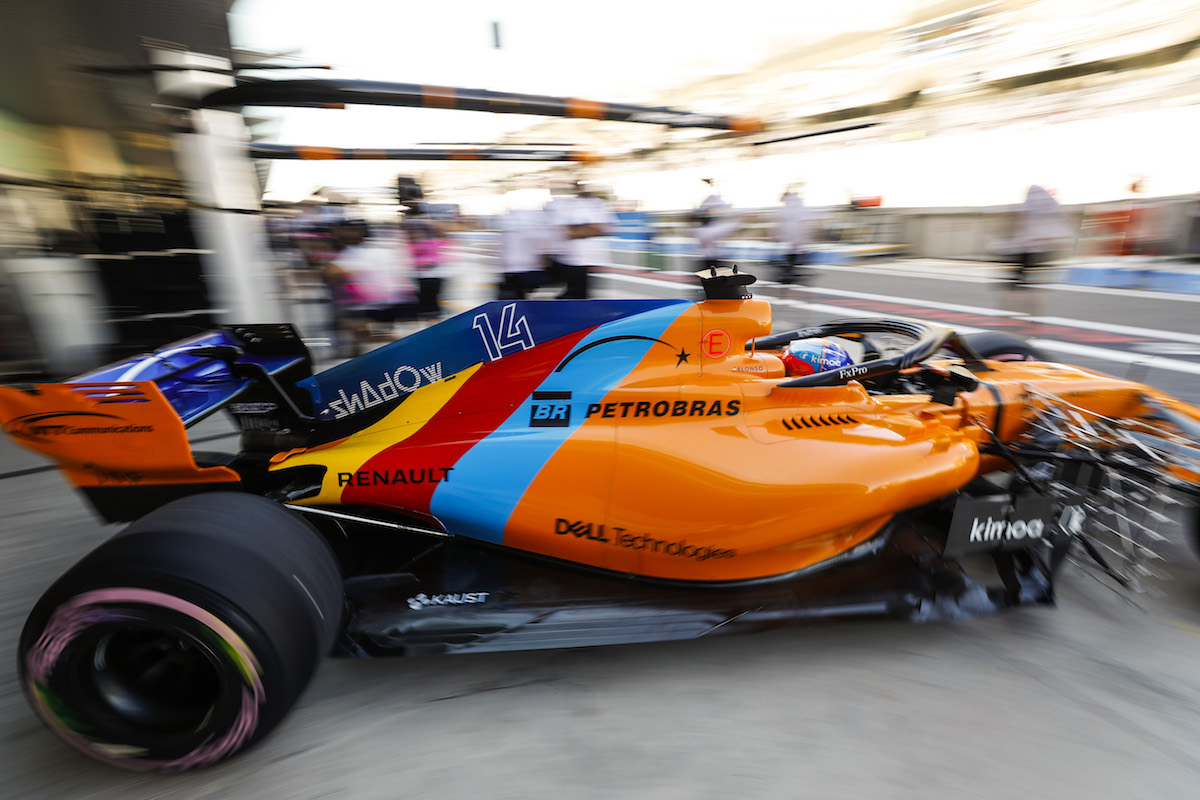
Members from the McLaren Group attended the University's 2019 Winter Enrichment Program, speaking about KAUST and McLaren's ongoing extreme performance research partnership. Image courtesy of the McLaren Group.
-By Meres J. Weche, KAUST News
The theme of the University's 2019 Winter Enrichment Program (WEP) was "time." It represented an opportune moment for KAUST to welcome members of the McLaren Group to campus to discuss the recently signed extreme performance research partnership between KAUST and McLaren.
"Undoubtedly, McLaren is in the business of time," said Jonathan Neale, chief operating officer at the McLaren Group.
Speaking as part of a WEP 2019 keynote lecture, Neale highlighted that McLaren Racing and McLaren Technology Group have one thing in mind: performance.
"Great teams and championships are made on great partnerships," he said. "We're looking to take leading edge thinking, the kind of work that's being done here [at KAUST, and]...apply it and make it real in a very short period of time."
"We're very excited by this partnership. It really opens up a lot of avenues," added Mark Barnett, head of strategy at McLaren Racing. "The KAUST-McLaren partnership provides McLaren with access to KAUST's world-leading researchers and facilities. In return, McLaren can provide real-world applications within one of the world's most demanding test environments to prove out those technologies."
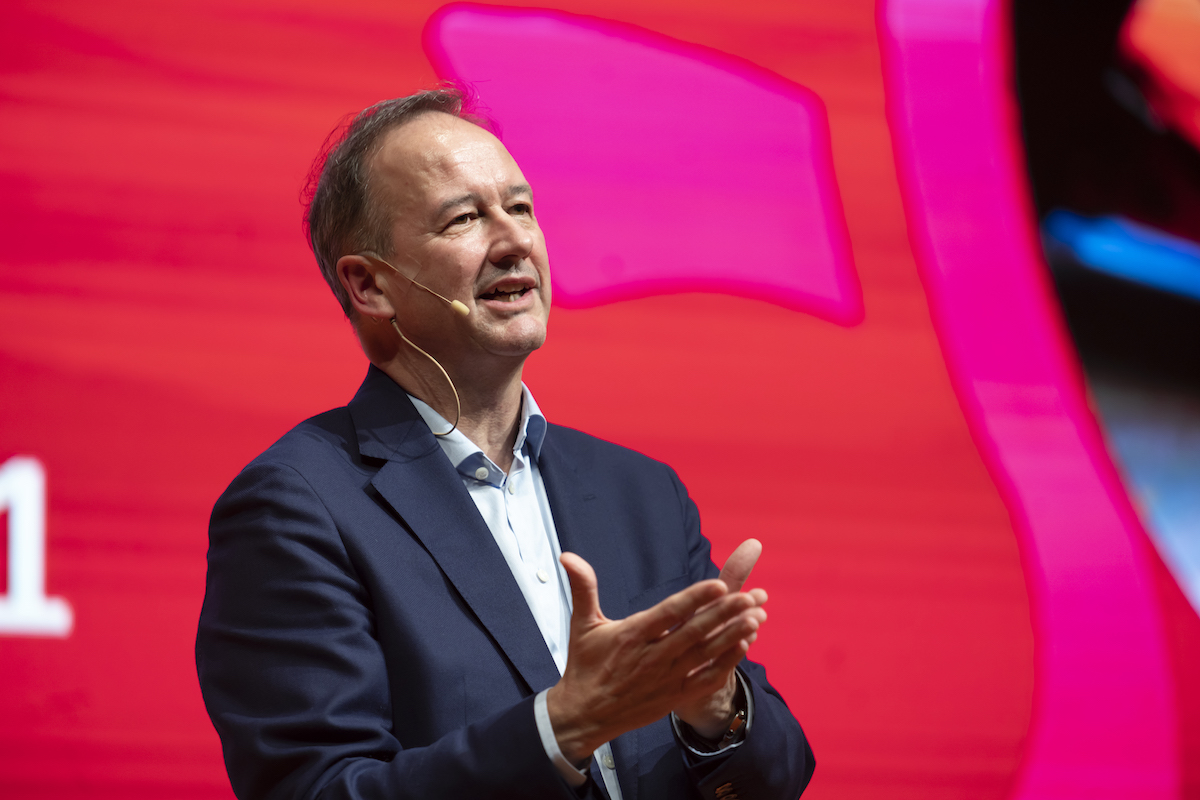
Jonathan Neale, chief operating officer at the McLaren Group, speaks on campus during the University's 2019 Winter Enrichment Program. File photo.
The pressure of time
The world of Formula 1 racing is a technologically driven and demanding environment. One of the things differentiating it from other motorsport series is that racing teams must own and create their own intellectual property. Every car is a representation of the team's own research and development program set against a specific set of regulations from the Fédération Internationale de l'Automobile (FIA) governing body.
Every car on the grid must have 110 kilos of fuel from the start to the end of the race. The crucial differentiation in determining performance can be found in optimizing the combustion timing of the engine. There's also a mere 4 percent product performance difference between the best and worst racing vehicle on the grid. The top six cars are separated by 0.15 percent product performance.
.jpg)
McLaren F1 driver Lando Norris talks to the KAUST audience as part of a keynote lecture during the 2019 Winter Enrichment Program. File photo.
"It really is a marginal gains sum here. When we look for continuous improvement in high-speed R&D, we're looking for improvements everywhere and in anything at a rate at which we need to stay ahead of the competition," Neale explained.
Fundamental science as a competitive advantage
In order to gain and maintain a competitive advantage, McLaren needs to essentially be good at everything. This means mastering aerodynamics, composite materials, fuel composition, thermodynamics, hydraulic systems, sensor technologies and more.
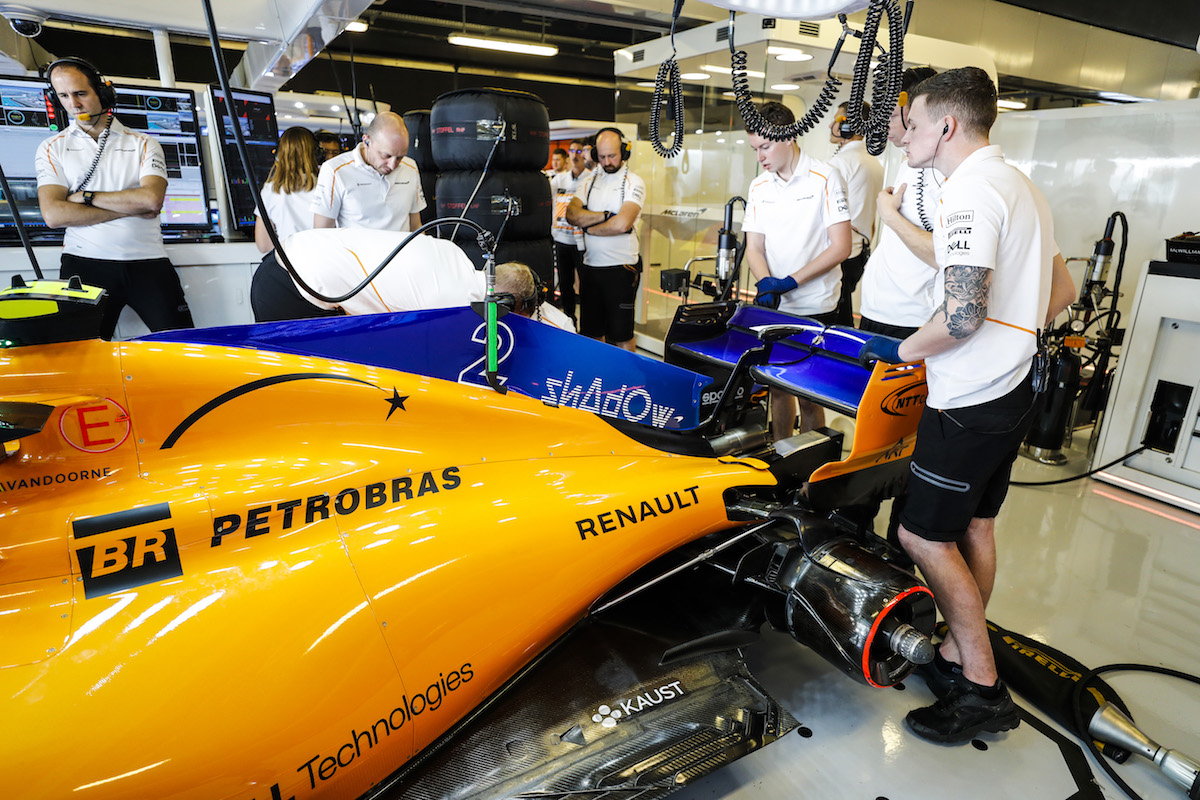
'[W]e look for continuous improvement in high-speed R&D,' Jonathan Neale, McLaren Group's chief operating officer, explained during his 2019 Winter Enrichment Program keynote lecture. Image courtesy of the McLaren Group.
Two projects under the KAUST-McLaren partnership currently underway focus on advanced computational fluid dynamics (CFD) techniques (led by KAUST Assistant Professor Matteo Parsani, a member of the University's Extreme Computing Research Center [ECRC]) and fuel design (led by Associate Professor Mani Sarathy, associate director of the Clean Combustion Research Center, in collaboration with McLaren's fuel partner Petrobras).
Computational fluid dynamics
"The aerodynamics of a Formula 1 car is very advanced. I would say it's probably the most advanced aerodynamic object that I know," Parsani explained. "Even more than a commercial airline; it's at the level of a fighter aircraft. What we're trying to do with McLaren is to advance the aerodynamic design for the next generation of Formula 1 cars."
Parsani, whose background is in aerospace engineering, is working on innovative technology to improve the aerodynamic properties of the Formula 1 car's front wing and endplate. The objective is to take out a fraction of a second per lap—if the researchers are very good, something like 0.05 to 0.1 second. This incremental improvement over an average of 50 laps in a race can translate into shaving off just a few seconds—which can be the difference between the 10th, fifth and first position.
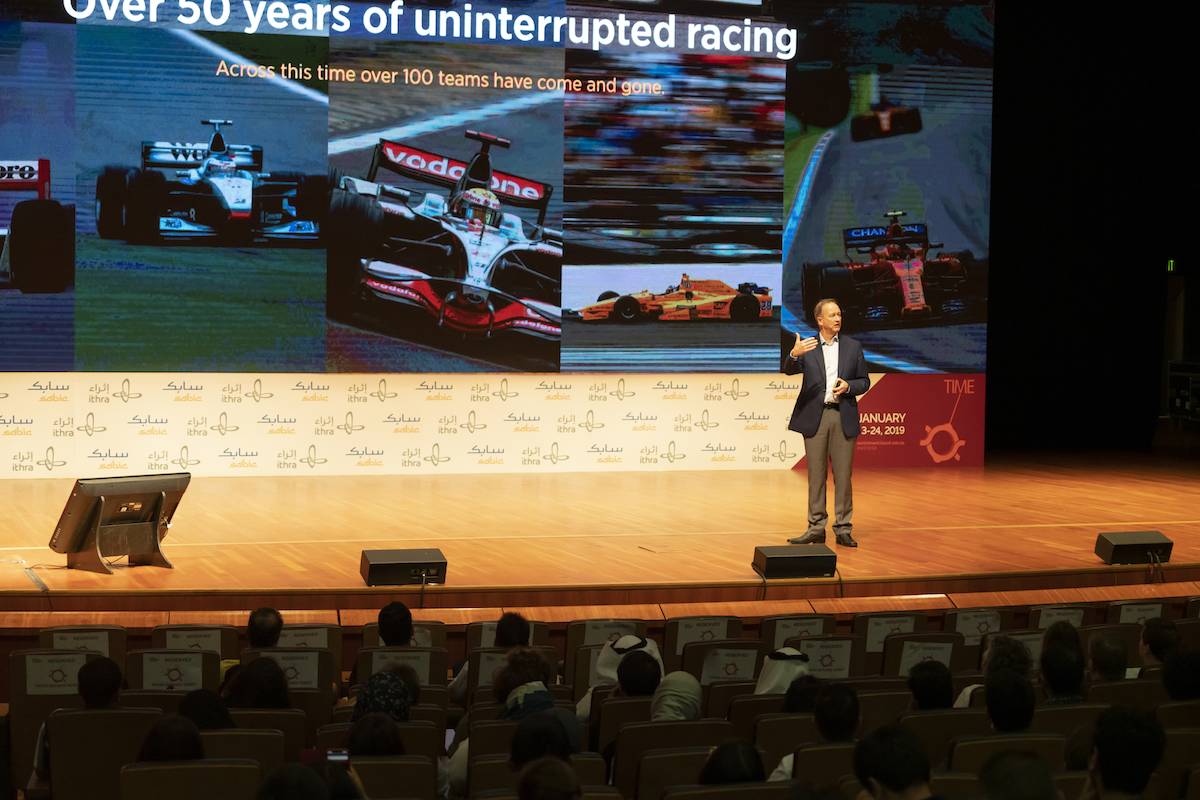
Jonathan Neale, chief operating officer at the McLaren Group, told the KAUST audience at his 2019 Winter Enrichment Program keynote lecture that '[g]reat teams and championships are made on great partnerships.' File photo.
While KAUST does not have a fluid dynamics department, more than 30 percent of the Shaheen XC40 supercomputer's core hours are used by CFD. CFD is much less expensive to perform than traditional wind tunnel technology, meaning that more data can be collected faster and more cheaply.
More advanced algorithms with better properties are required to effectively solve this off-body flow problem.
"The focus of my research and the partnership with McLaren is to advance these algorithms and use them to investigate and improve the aerodynamics of their F1 racing car," Parsani said.
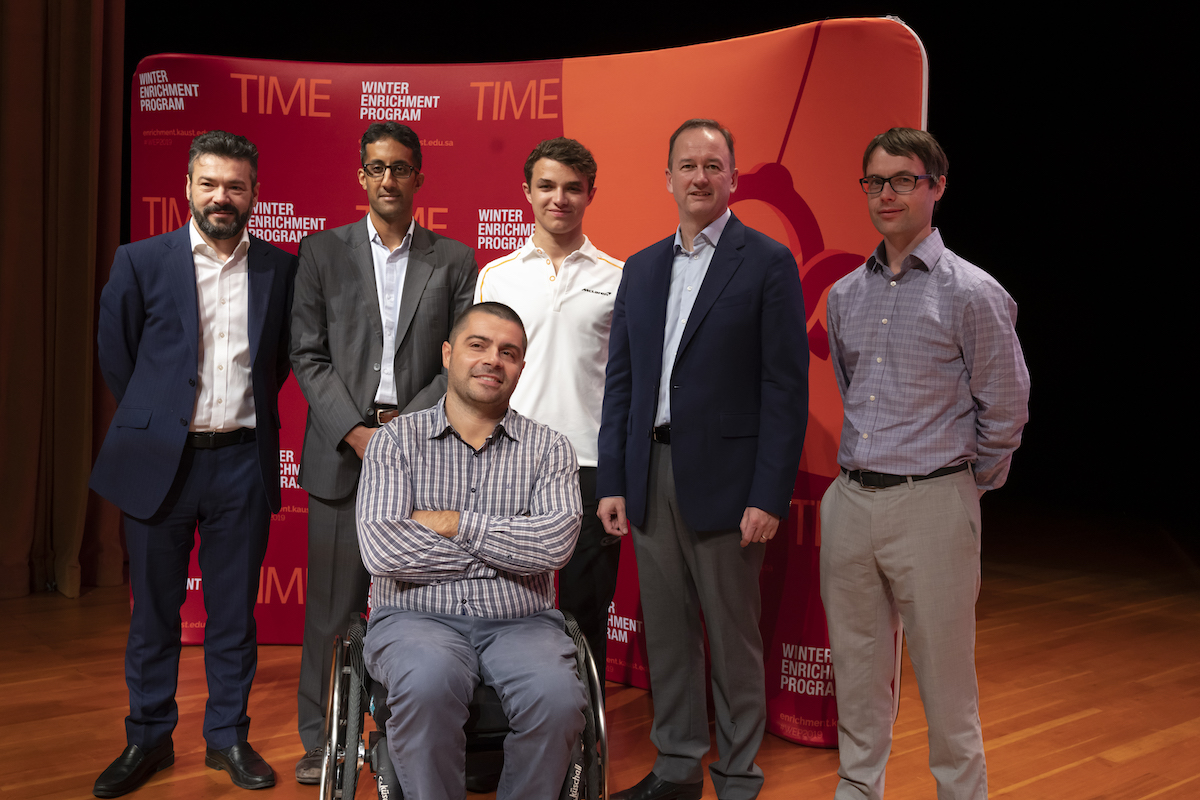
Key members of the KAUST-McLaren research partnership are shown here on campus during the University's 2019 Winter Enrichment Program; these include Mani Sarathy, associate director of the KAUST Clean Combustion Research Center (second from left); Lando Norris, McLaren F1 driver (third from left); Jonathan Neale, chief operating officer at the McLaren Group (second from right); and Matteo Parsani, KAUST assistant professor of applied mathematics and computational science (front row). File photo.
Fuel composition
Since 2014, Formula 1 cars have been powered by hybrid engines—meaning they are powered by an internal combustion engine coupled with a battery and electric motor. Fuel development is a pivotal element in optimizing the performance of the combustion engine.
Pushing the engine to its limits requires a deep understanding of the mixing and chemical reactions taking place inside the combustion chamber. From a fundamental science perspective, the KAUST Clean Combustion Research Center offers McLaren important expertise.
"We have experimental facilities which can be used to study the combustion of different fuels at various types of conditions. We can also approach the thermodynamic conditions of these very advanced engines in our laboratories," Sarathy explained. "Putting all this together in one place is quite rare."
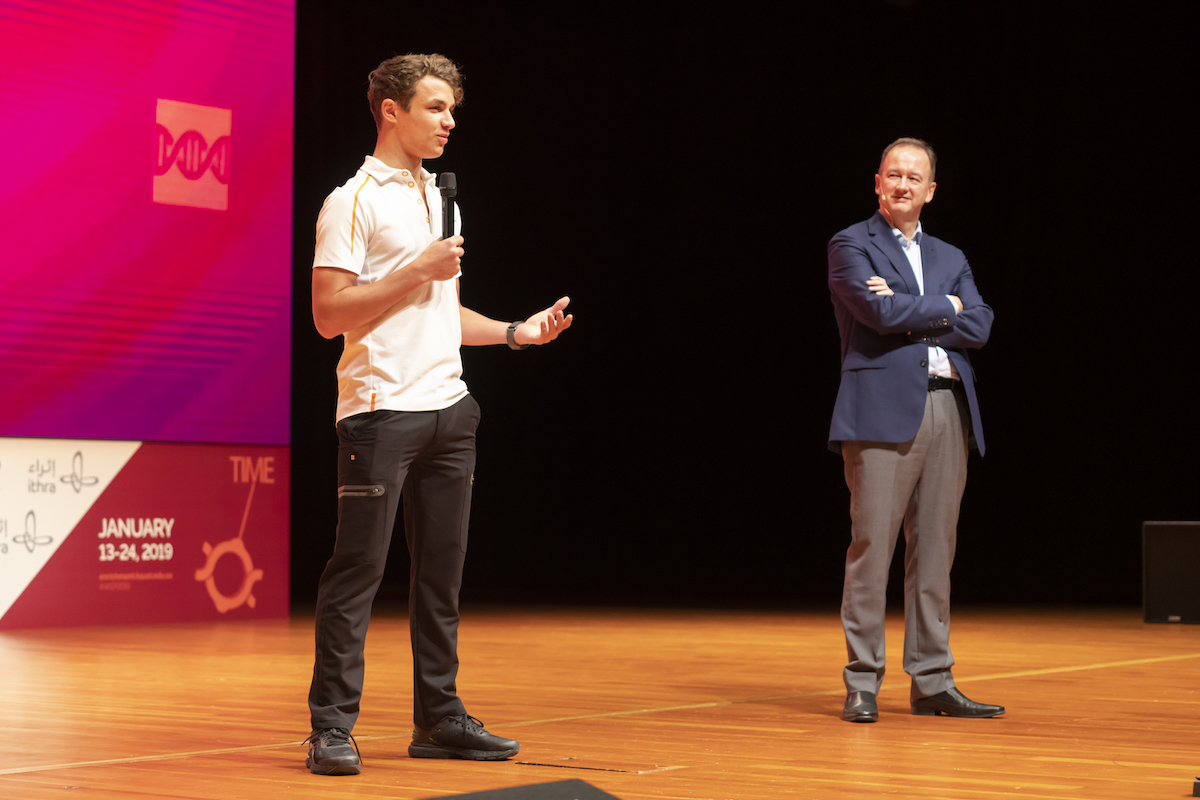
Lando Norris, McLaren F1 driver (left), and Jonathan Neale, chief operating officer at the McLaren Group (right), talk to the KAUST audience about the intricacies of Formula 1 racing during the University's 2019 Winter Enrichment Program. File photo.
Sarathy brings added value by using phenomenological-based models that provide precise understanding of the combustion process at a molecular level at the different regimes of temperature and pressure.
"We want the best fuel molecules blended in a way that gives us the most efficient combustion mode that we can find," stated Neale.
A mutually beneficial partnership
The fundamental science advantage KAUST brings to the partnership through improved quantitative metrics, automation and artificial intelligence is critical to improve the range and quality of the data McLaren uses to make efficient decisions.
For KAUST researchers, the partnership is an opportunity to work on the real-world laboratory of a Formula 1 car and engine. This extreme environment allows the University's faculty, scientists and students to test the limits of science and push boundaries.
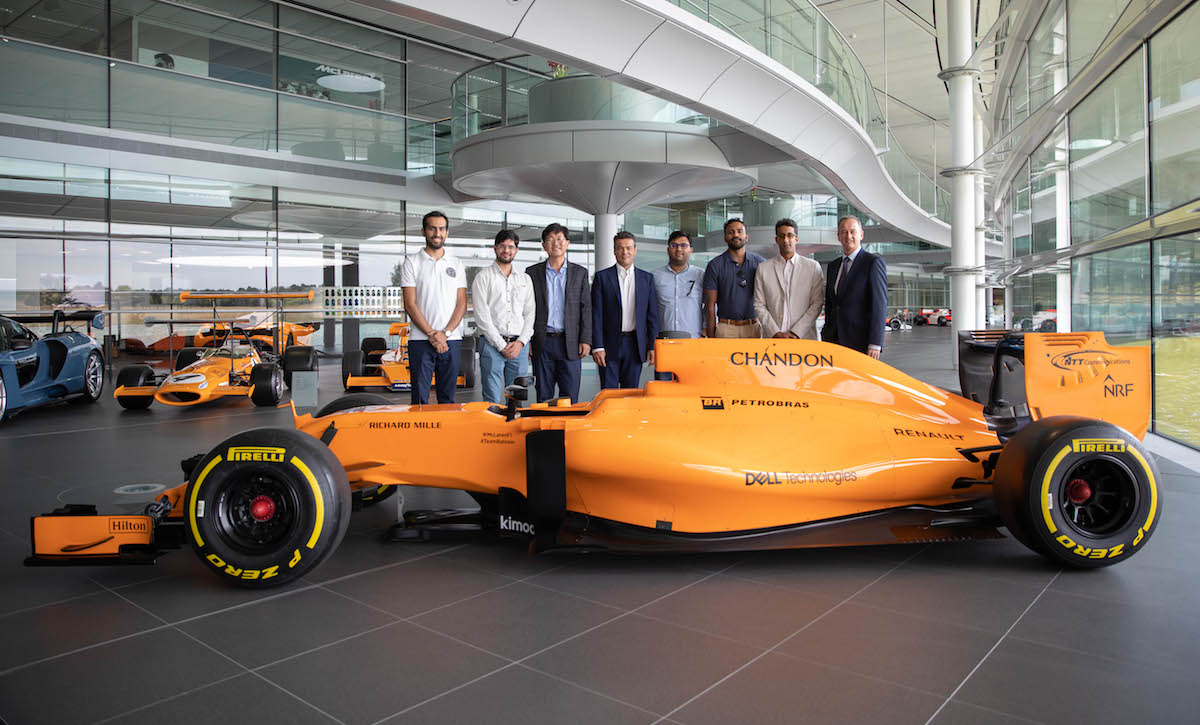
KAUST and McLaren's extreme performance research partnership also includes sensors, machine learning, applied mathematics, extreme computing, computer vision and other areas. Shown here are members of the research partnership at McLaren's headquarters. Image courtesy of the McLaren Group.
The scope of the five-year KAUST-McLaren extreme performance research partnership also involves applied mathematics, extreme computing, sensors, machine learning, computer vision and many different areas.
"We have to stand on the shoulders of people who are doing extraordinary science...That's why we're here [at KAUST]...We are so proud and privileged to be with you," Neale said.
Related stories:
- Pushing the limits of science on the track
- KAUST partners with McLaren Racing on R&D
- A 'silver bullet' awakening
-
An algorithm for success

